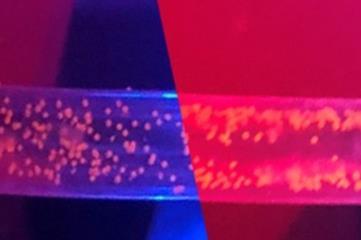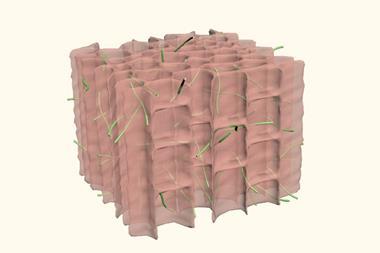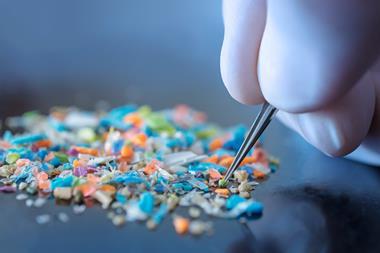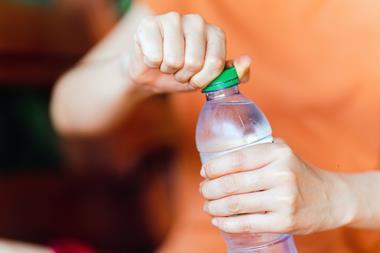Acoustic waves can be used to separate microplastics from contaminated water, and could be a new way to tackle this ubiquitous pollutant. Researchers at the New Mexico Institute of Mining and Technology in the US who carried out the research discussed it at the spring meeting of the American Chemical Society (ACS) on 28 March.

Most plastics in the ocean break down into small microplastic particles less than 5mm across that can harm aquatic life. Filtration is the most common method of getting microplastics out of water, but the New Mexico Tech team instead decided to come up with a method of concentrating plastic particles in flowing water with sound waves.
A similar approach has been used to separate red blood cells from plasma in the past, for instance. Some researchers have even used it to pull microplastics out of pure water samples prepared in the lab. That work, however, involved tiny volumes of water and microplastics that were only tens of micrometres wide.
The New Mexico Tech team built its proof-of-concept device using 8mm wide steel tubes connected to an inlet tube and several outlet tubes, along with a transducer to generate ultrasound. The acoustic forces are applied to microplastics as they pass through, causing them to aggregate and making them easier to capture in a single outlet. The device could be useful for separating most types of microplastic, and doesn’t clog as easily as a filter.
Although the design is at an early stage, Menake Piyasena, the project’s leader, suggested that the main advantage of this approach is ‘the ability to design a flow through chamber and its simplicity’. Because there is no mesh or physical filters, clogging will be minimised, and parts will not need to be replaced regularly, he added.
The idea for the project came from conversations with a colleague who was interested in decomposing isolated microplastics chemically, Piyasena said. ‘Because we are doing research on utilising acoustic waves to concentrate biological cells and perform biological reactions on them, we thought what if we can use the same method to concentrate microplastics and we started exploring this idea further,’ he recalled.
The prototype that the researchers made captures small microplastics less than 180µm wide in the first stage, and the water stream containing the remaining larger microplastics goes to the second stage to be cleaned. They were able to successfully remove more than 70% of the small plastic particles and more than 82% of the large ones.
The team demonstrated that this system works in the real-world by testing it on water samples from a pond on their university’s campus and from the Rio Grande River. The researchers first filtered out large contaminants, and then spiked the water with microplastics. They found that the acoustic device removed plastic particles just as effectively as from pure water. ‘We could remove more than 80% of microplastics using the setup,’ said Nelum Perera, a graduate student in Piyasena’s lab. It costs about 7 cents to operate the prototype device for an hour and it could clean one litre of water in about 90 minutes, she estimates.
The researchers plan to build a next-generation prototype with wider tubes, or bundles of multiple tubes. They also intend to test it on unspiked real-world samples, including seawater and wastewater from washing machines.
Rodney Priestley, a chemical and biological engineering professor at Princeton University, who was not involved in this study, says this work is promising. ‘Removing microplastic from various water sources represents a significant engineering challenge with enormous environmental and health implications,’ states Priestley, who has been involved in research that removed microplastics from seawater.
‘One of the major obstacles is the relatively low microplastic concentration in some contaminated sources,’ he tells Chemistry World. ‘The use of acoustic waves to “push” microplastic together is a promising approach to address this issue and enhance filtration.’

















No comments yet